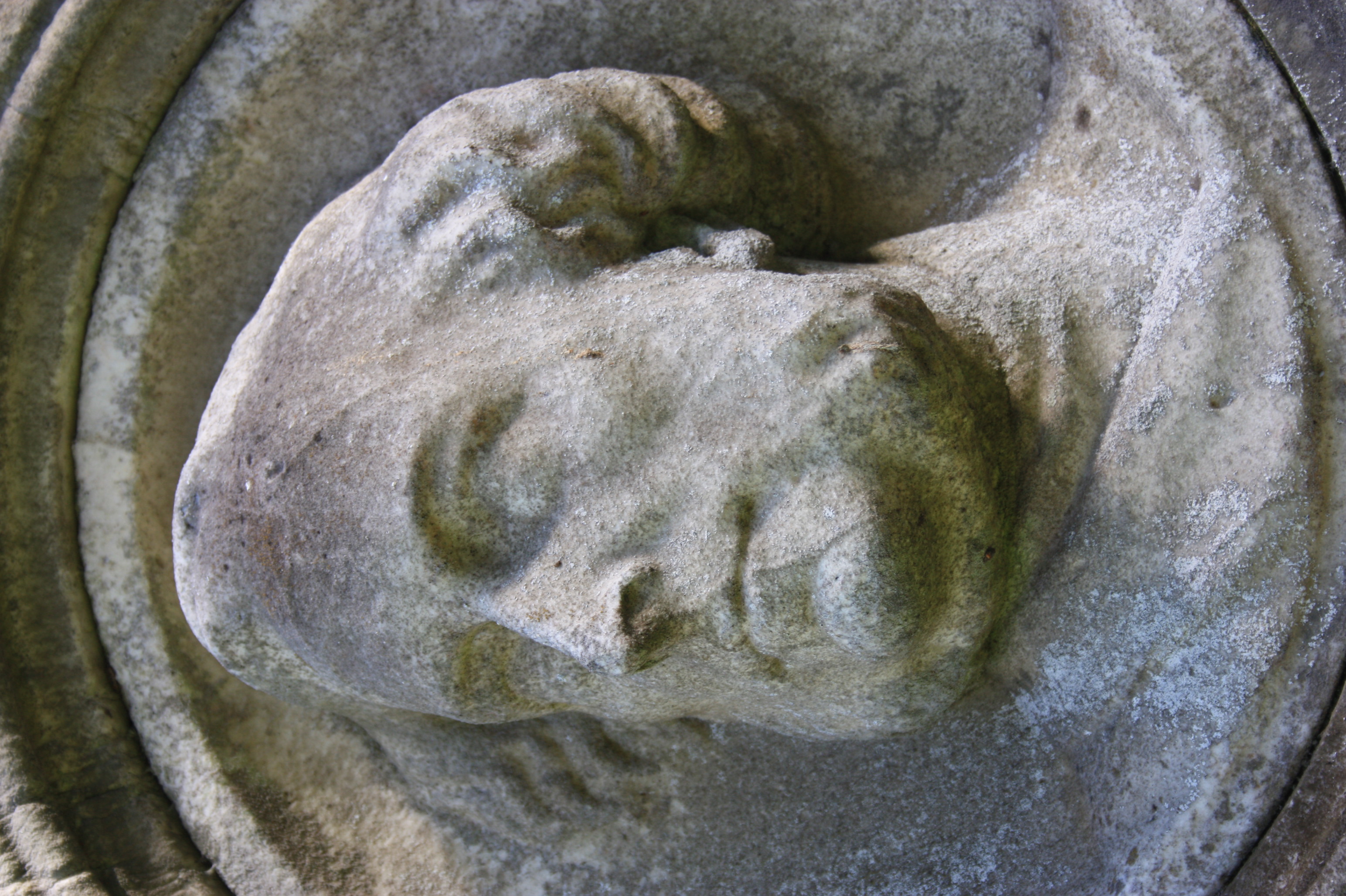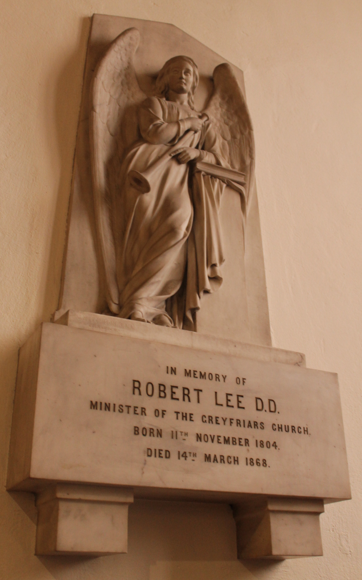Robert Lee (minister) on:
[Wikipedia]
[Google]
[Amazon]

 Robert Lee
Robert Lee

 He was born in Tweedmouth on 21 November 1804, the eldest of three sons to Jane Lambert and George Lee, a boat-builder from a long line of boat-builders on the River Tweed. He was educated at Berwick Grammar School. He was then apprenticed into the family business, working as a boat-builder for six years. However, in 1824, his family seeing his potential, paid for him to study classics at the
He was born in Tweedmouth on 21 November 1804, the eldest of three sons to Jane Lambert and George Lee, a boat-builder from a long line of boat-builders on the River Tweed. He was educated at Berwick Grammar School. He was then apprenticed into the family business, working as a boat-builder for six years. However, in 1824, his family seeing his potential, paid for him to study classics at the

 Robert Lee
Robert Lee FRSE
Fellowship of the Royal Society of Edinburgh (FRSE) is an award granted to individuals that the Royal Society of Edinburgh, Scotland's national academy of science and letters, judged to be "eminently distinguished in their subject". This soci ...
(1804-1868) was the first Professor of Biblical Criticism at the University of Edinburgh
The University of Edinburgh ( sco, University o Edinburgh, gd, Oilthigh Dhùn Èideann; abbreviated as ''Edin.'' in post-nominals) is a public research university based in Edinburgh, Scotland. Granted a royal charter by King James VI in 1 ...
. He was both minister of Old Greyfriars Kirk and a Dean of the Chapel Royal serving Queen Victoria
Victoria (Alexandrina Victoria; 24 May 1819 – 22 January 1901) was Queen of the United Kingdom of Great Britain and Ireland from 20 June 1837 until her death in 1901. Her reign of 63 years and 216 days was longer than that of any previ ...
.
Life

 He was born in Tweedmouth on 21 November 1804, the eldest of three sons to Jane Lambert and George Lee, a boat-builder from a long line of boat-builders on the River Tweed. He was educated at Berwick Grammar School. He was then apprenticed into the family business, working as a boat-builder for six years. However, in 1824, his family seeing his potential, paid for him to study classics at the
He was born in Tweedmouth on 21 November 1804, the eldest of three sons to Jane Lambert and George Lee, a boat-builder from a long line of boat-builders on the River Tweed. He was educated at Berwick Grammar School. He was then apprenticed into the family business, working as a boat-builder for six years. However, in 1824, his family seeing his potential, paid for him to study classics at the University of St Andrews
(Aien aristeuein)
, motto_lang = grc
, mottoeng = Ever to ExcelorEver to be the Best
, established =
, type = Public research university
Ancient university
, endowment ...
in Scotland
Scotland (, ) is a country that is part of the United Kingdom. Covering the northern third of the island of Great Britain, mainland Scotland has a border with England to the southeast and is otherwise surrounded by the Atlantic Ocean to ...
. He supplemented his income by tutoring the young George Whyte-Melville.
He was licensed by the Presbytery of St Andrews in 1832 and ordained as a minister of the Church of Scotland in 1833, his first charge being Inverbrothock Chapel of Ease, near Arbroath
Arbroath () or Aberbrothock ( gd, Obar Bhrothaig ) is a former royal burgh and the largest town in the council area of Angus, Scotland, with a population of 23,902.
It lies on the North Sea coast some ENE of Dundee and SSW of Aberdeen.
Th ...
. In 1836 he was translated to Campsie, Stirlingshire
Campsie is a civil parish in East Dunbartonshire, Scotland. The parish was formerly part of Stirlingshire.
Settlements
* Auchenreoch
*Clachan of Campsie
* Haughhead
*Lennoxtown
*Milton of Campsie
* Torrance
* Baldernock (at one time the parish en ...
.
In 1843 he was chosen to be minister of Old Greyfriars Kirk in Edinburgh
Edinburgh ( ; gd, Dùn Èideann ) is the capital city of Scotland and one of its 32 Council areas of Scotland, council areas. Historically part of the county of Midlothian (interchangeably Edinburghshire before 1921), it is located in Lothian ...
, a prestigious charge. Unlike many of his peers, he did not leave the established church in the Disruption of 1843
The Disruption of 1843, also known as the Great Disruption, was a schism in 1843 in which 450 evangelical ministers broke away from the Church of Scotland to form the Free Church of Scotland.
The main conflict was over whether the Church of S ...
and remained with the established church. The University of St Andrews awarded him with a doctorate ( DD) in 1844. He was appointed a Chaplain in Ordinary to Her Majesty in 1846. In 1847 he became the first Professor of Biblical Criticism at the University of Edinburgh. He lived at 24 George Square
George Square ( gd, Ceàrnag Sheòrais) is the principal civic square in the city of Glasgow, Scotland. It is one of six squares in the city centre, the others being Cathedral Square, St Andrew's Square, St Enoch Square, Royal Exchange ...
in Edinburgh, not far from his church.
In 1853 he was elected a Fellow of the Royal Society of Edinburgh
The Royal Society of Edinburgh is Scotland's national academy of science and letters. It is a registered charity that operates on a wholly independent and non-partisan basis and provides public benefit throughout Scotland. It was established i ...
his proposer being John Russell.
From 1857 he began a major reform of the Presbyterian Church Service: he restored the reading of prayers, and introduced the practice of kneeling to pray and standing to sing. Singing in the Protestant Church had long been plain-song. He began the reintroduction of music: adding a harmonium to Greyfriars in 1863 and its first organ
Organ may refer to:
Biology
* Organ (biology), a part of an organism
Musical instruments
* Organ (music), a family of keyboard musical instruments characterized by sustained tone
** Electronic organ, an electronic keyboard instrument
** Hammond ...
in 1865.
He was gravely ill for the last 9 months of his life following a fall from his horse on Princes Street
Princes Street ( gd, Sràid nam Prionnsan) is one of the major thoroughfares in central Edinburgh, Scotland and the main shopping street in the capital. It is the southernmost street of Edinburgh's New Town, stretching around 1.2 km (thr ...
after an evening out with fellow ministers on 22 May 1867, the eve of the General Assembly of the Church of Scotland 1867. In late autumn 1867 he gave up his ministry and went to live with a friend Rev Alfred Edersheim
Alfred Edersheim (7 March 1825 – 16 March 1889) was a Jewish convert to Christianity and a Biblical scholar known especially for his book ''The Life and Times of Jesus the Messiah'' (1883).
Early life and education
Edersheim was born in ...
in Torquay
Torquay ( ) is a seaside town in Devon, England, part of the unitary authority area of Torbay. It lies south of the county town of Exeter and east-north-east of Plymouth, on the north of Tor Bay, adjoining the neighbouring town of Paig ...
in southwestern England, hoping the climate would improve his health. He died there on 14 March 1868.
His body was returned to Edinburgh for burial and he is buried in the south-east section of Grange Cemetery in southern Edinburgh
Edinburgh ( ; gd, Dùn Èideann ) is the capital city of Scotland and one of its 32 Council areas of Scotland, council areas. Historically part of the county of Midlothian (interchangeably Edinburghshire before 1921), it is located in Lothian ...
. The pale sandstone monument, bearing his head in high relief, was sculpted by John Hutchison.
His wife was given a civil list pension of £100 per annum.
Family
In June 1836 he married Isabella Carrack Buchanan (d.1889), who was from Campsie parish where he was minister. They had four daughters and one son; *Margaret (1837-1862) married Lockhart Thomson SSC. *George (1839-1862) *Bella (1840-1863) *Jane Ann (1843-1858) *Catherine Napier (b.1845)Publications
*''The Theses of Erasmus Touching Excommunication'' (1844) *''A Handbook of Devotion'' (1845) *''The Holy Bible with Marginal References Improved'' (1854) *''Prayers for Public Worship'' (1858) *''Prayers for Family Worship'' (1861 revised 1884) *''The Family and its Duties'' (1863) *''The Reform of the Church in Worship, Government and Doctrine'' (1864) *''The Clerical Profession'' (1866) *''Reform in Worship'' (1868) *''The Order of Public Worship and Administration of the Sacraments'' (1873)Artistic recognition
His portrait, by James R. Edgar, is held by the National Gallery of Scotland. A pair of memorials exist to Lee within Greyfriars Kirk.References
{{DEFAULTSORT:Lee, Robert 1804 births 1868 deaths People associated with Edinburgh Alumni of the University of St Andrews Academics of the University of Edinburgh 19th-century Ministers of the Church of Scotland